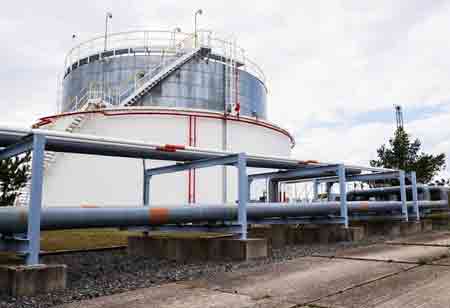Thank you for Subscribing to Energy Business Review Weekly Brief
Transforming Natural Gas Storage: Innovative Approaches and Solutions
Innovations in natural gas storage, including underground, compressed, liquefied, and adsorption technologies, enhance efficiency, safety, and sustainability.

By
Energy Business Review | Tuesday, September 23, 2025
Stay ahead of the industry with exclusive feature stories on the top companies, expert insights and the latest news delivered straight to your inbox. Subscribe today.
Fremont, CA: Breakthroughs in natural gas storage technologies are transforming the landscape of energy storage and distribution. New developments in underground, compressed, liquefied, and adsorption storage methods enhance both efficiency and sustainability in the natural gas sector.
Underground natural gas storage remains the most widely used method for storing natural gas, involving gas injection into porous rock formations, salt caverns, or depleted oil and gas reservoirs. Although this method has been used for a long time, innovations have significantly improved its efficiency and safety.
Integrating advanced monitoring systems allows for real-time data collection, helping detect potential leaks and optimize storage processes. Enhanced geological modeling and simulation techniques have also increased storage efficiency by improving the understanding of rock formations and gas flow, maximizing storage capacity, and extending the life of underground storage systems.
Compressed natural gas involves storing natural gas at high pressures within specially designed containers. Recent breakthroughs in this field focus on the materials used to construct these storage tanks. Using lightweight, high-strength composite materials such as carbon fiber and fiberglass-reinforced composites has significantly improved storage capacity while reducing the weight of tanks.
These innovations make CNG storage systems more efficient and cost-effective. Advances in pipeline technology and compression systems are enhancing the distribution of compressed natural gas, allowing for more efficient and widespread delivery to residential, commercial, and industrial users.
Liquefied natural gas (LNG) storage involves cooling natural gas to very low temperatures to convert it into a liquid form, reducing its volume significantly. Innovations in LNG storage include improved cryogenic tank designs and materials that enhance the thermal efficiency of storage systems. Vacuum-insulated and double-walled tanks reduce heat transfer and minimize gas loss during storage.
Floating LNG platforms have also emerged, allowing for offshore liquefaction, storage, and transportation of LNG, which reduces reliance on costly onshore infrastructure. In addition, small-scale LNG storage solutions are gaining popularity, offering cost-effective and flexible options for areas without access to large pipeline networks.
Absorption storage is a newer method that utilizes porous materials, such as activated carbon or metal-organic frameworks (MOFs), to store natural gas at lower pressures and temperatures. MOFs have demonstrated significant potential due to their ability to store substantial amounts of gas compactly. Using these high-capacity adsorbents could lead to more efficient and cost-effective storage systems.






